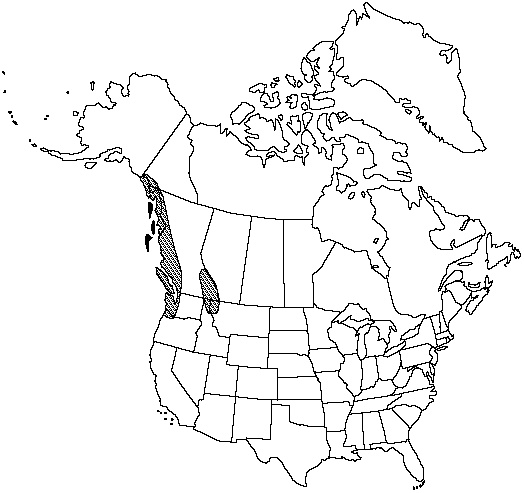Huperzia occidentalis
Phytologia 70: 201. 1991.
Shoots erect, indeterminate, 12–20 cm, becoming long-decumbent, 4–20 cm; leaves in mature portion slightly smaller than in juvenile portion; distinct annual constrictions present; juvenile growth erect. Leaves reflexed (juvenile portion) or spreading to reflexed (mature portion), light green to whitish green, lustrous; largest leaves oblanceolate, broadest at 1/2–3/4 length, 6–10 mm; smallest leaves narrowly triangular, broadest at base, 4–7 mm; margins with small papillae; stomates present on both surfaces, numerous (36–80 per 1/2 leaf) on adaxial surface. Gemmiferous branchlets produced in 1 pseudowhorl at end of annual growth; gemmae 4–4.5 × 3.5–4 mm; lateral leaves broadly obtuse, widest above middle, 1.25–1.5 mm wide. Spores 30–38 µm.
Habitat: Terrestrial in shaded conifer forests and swamps, often along streams and in marshes
Elevation: 10–1000(–2000) m
Distribution

Alta., B.C., Yukon, Alaska, Idaho, Mont., Oreg., Wash.
Discussion
Huperzia occidentalis is similar to the eastern H. lucidula and occupies similar habitats.
Selected References
None.